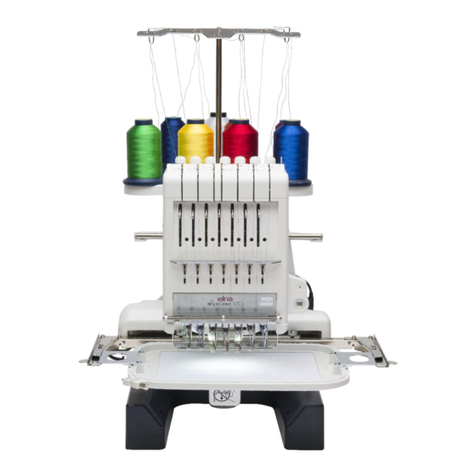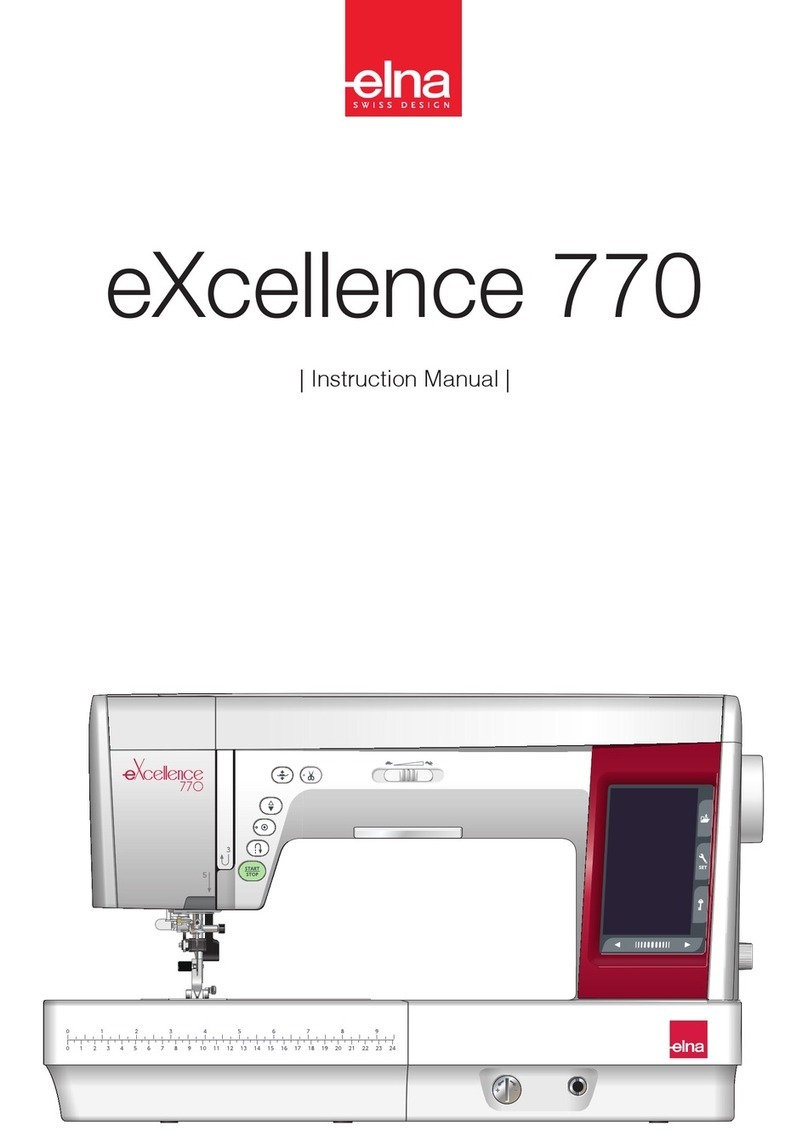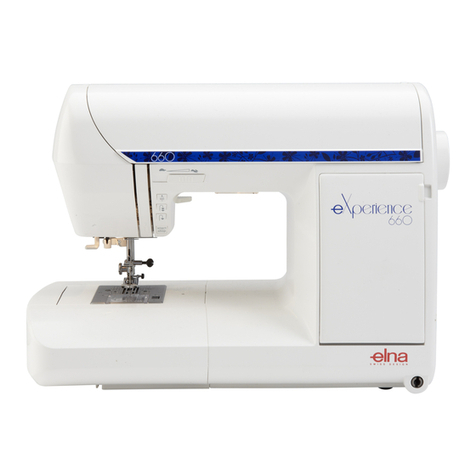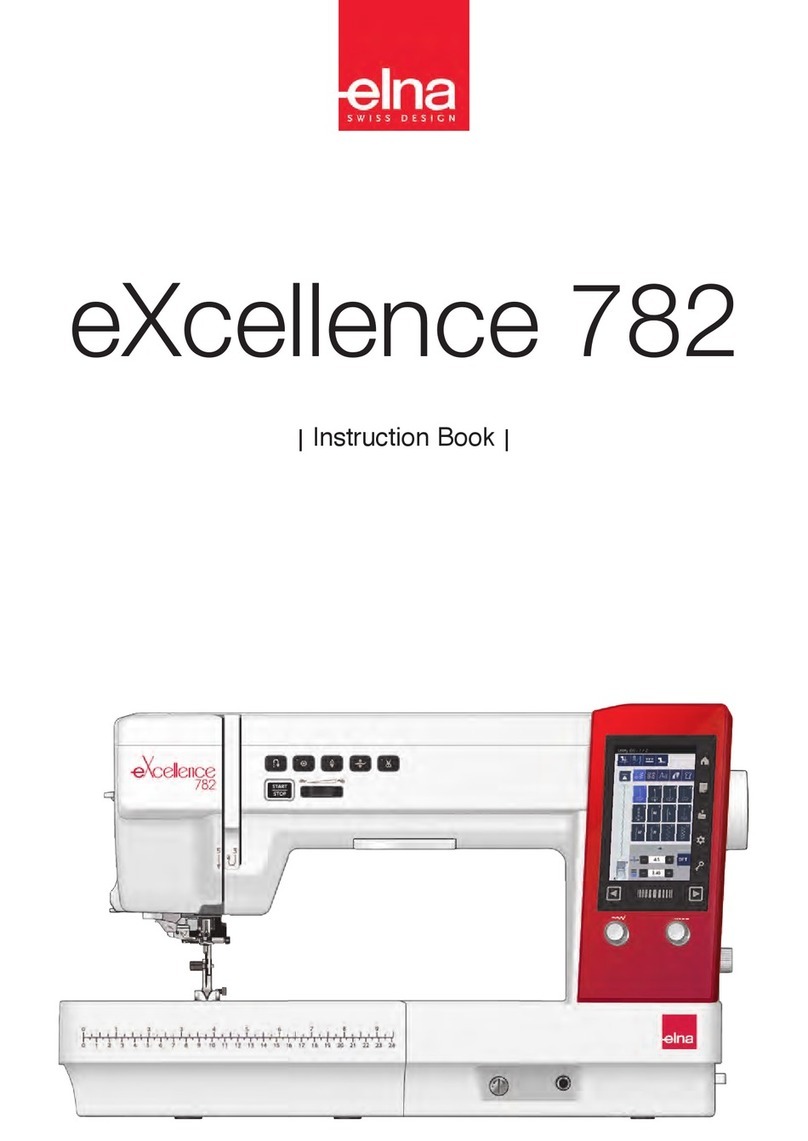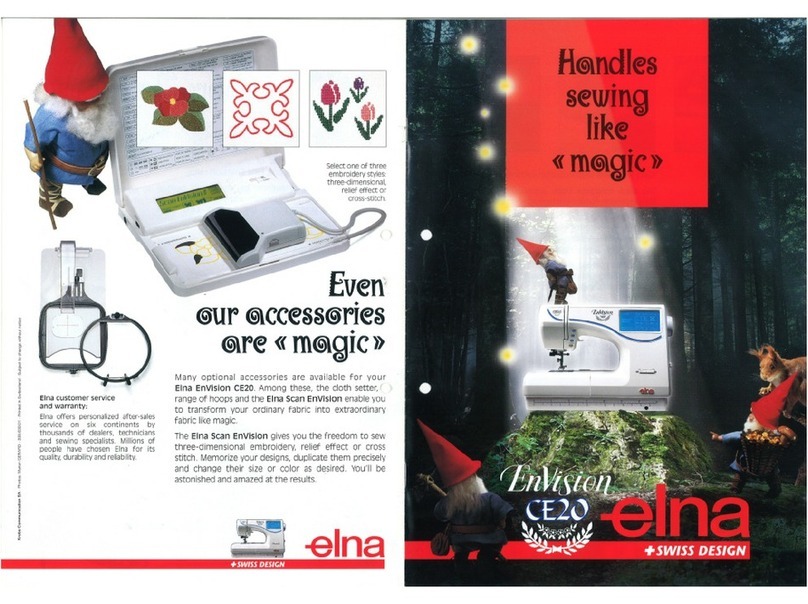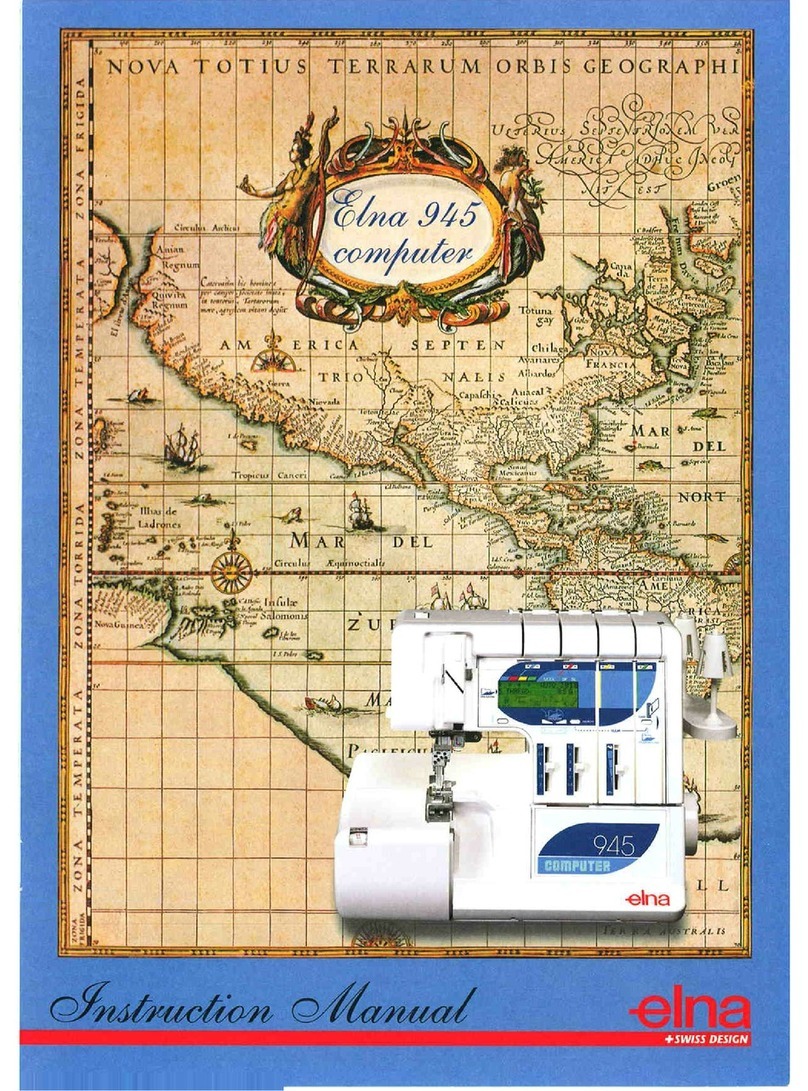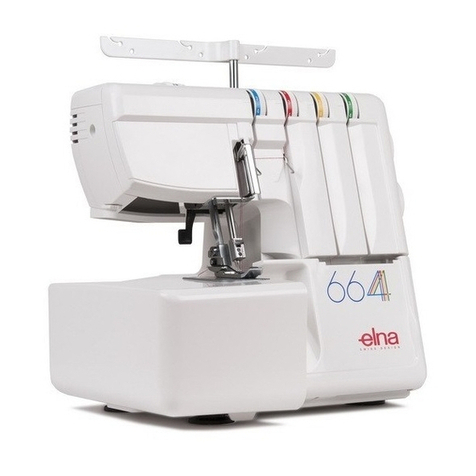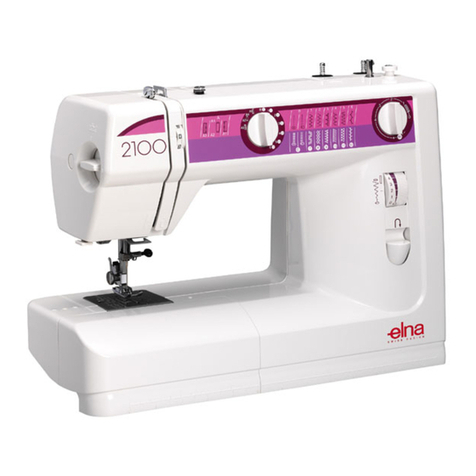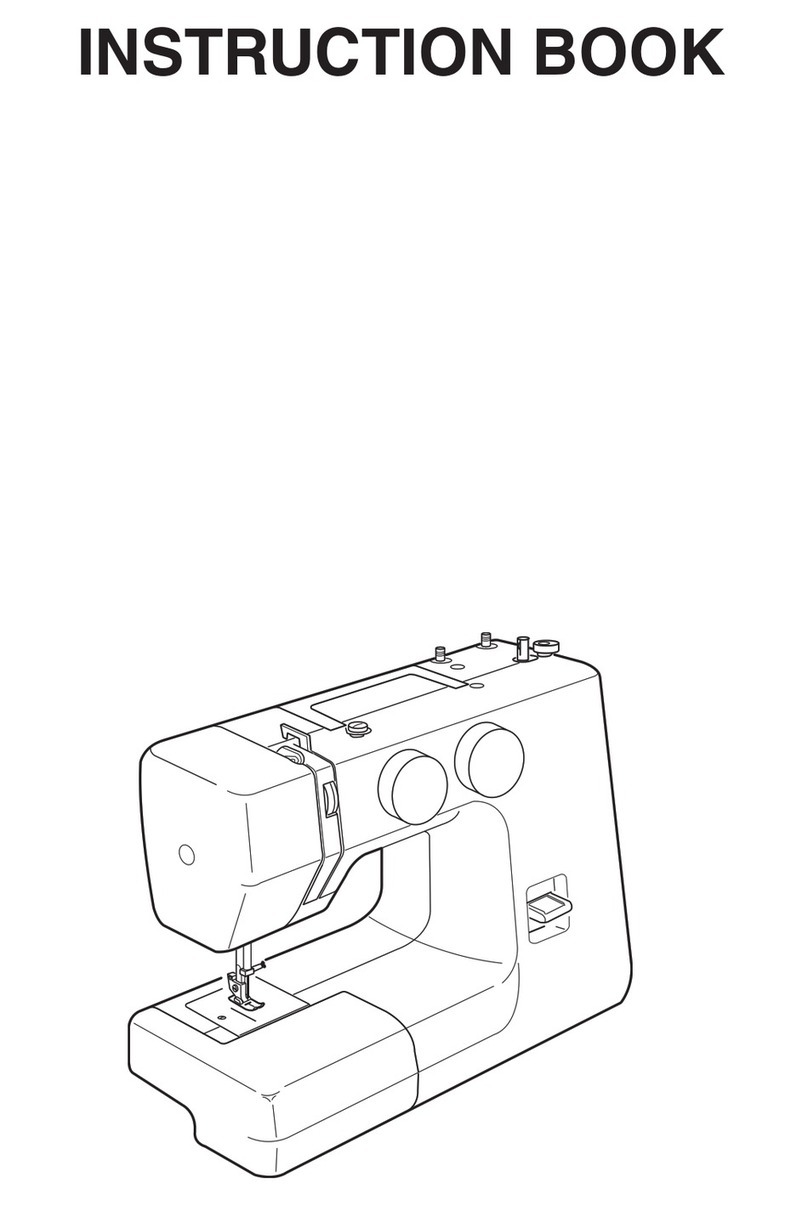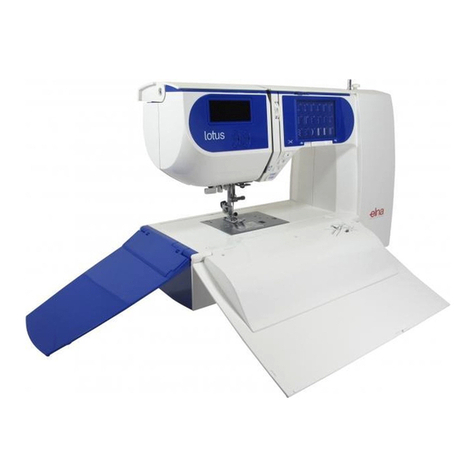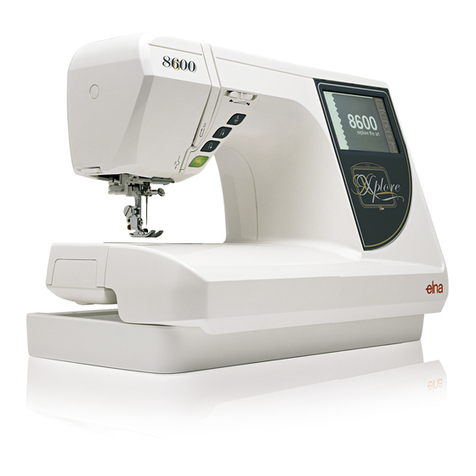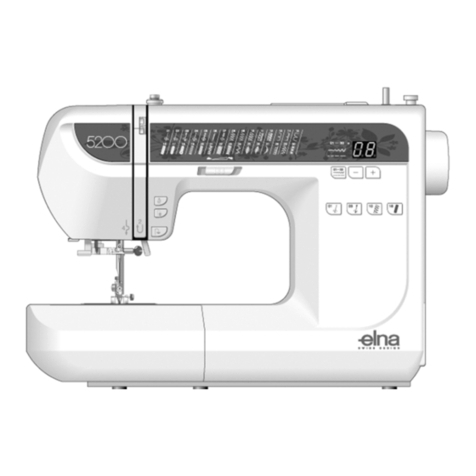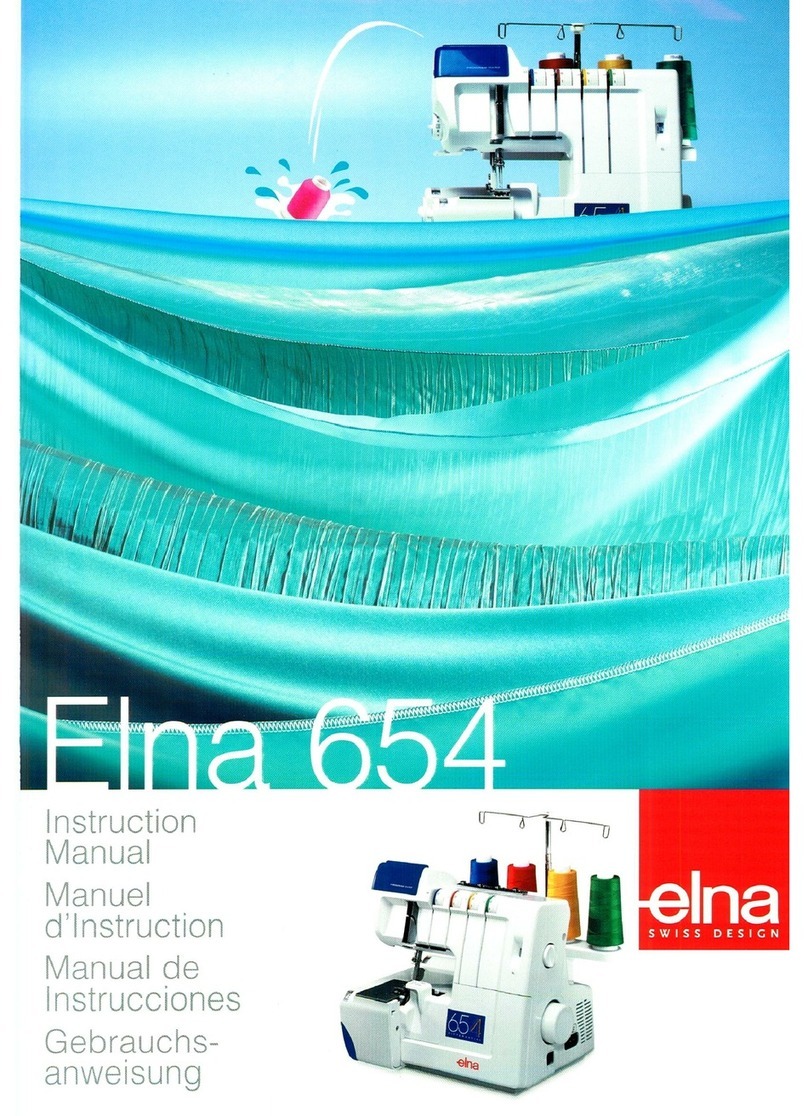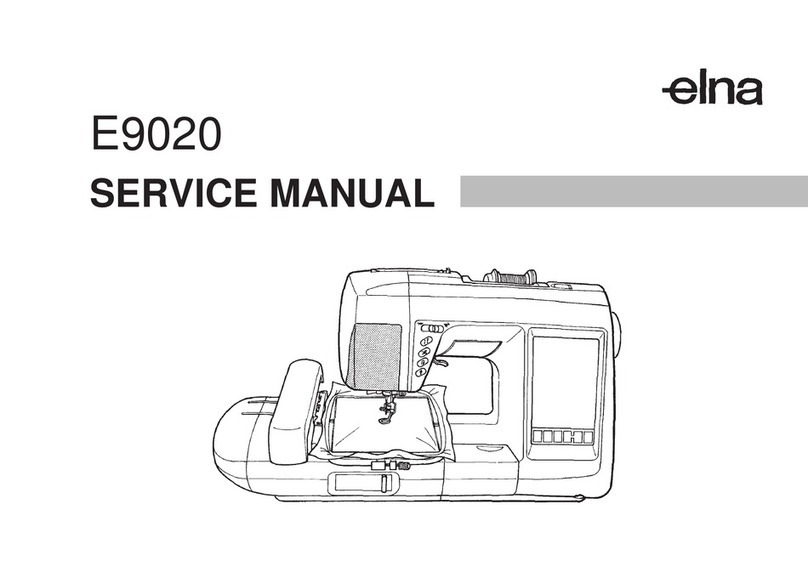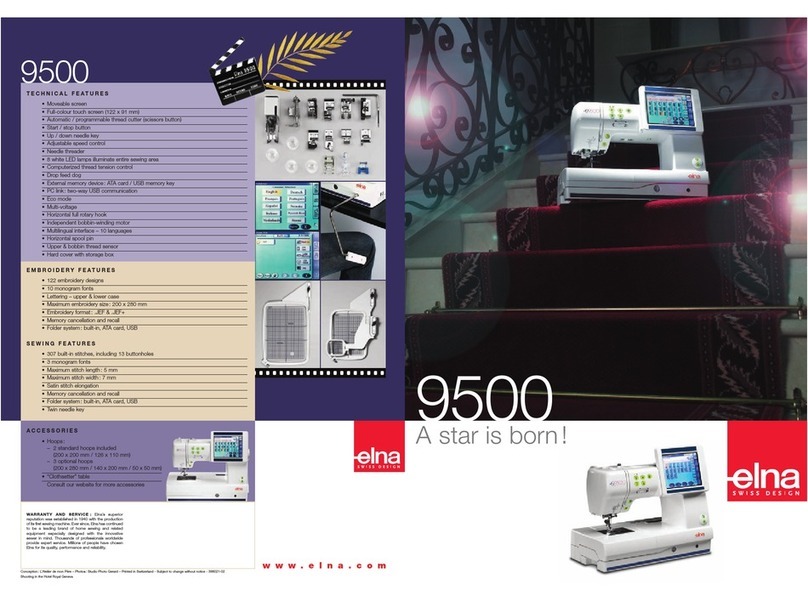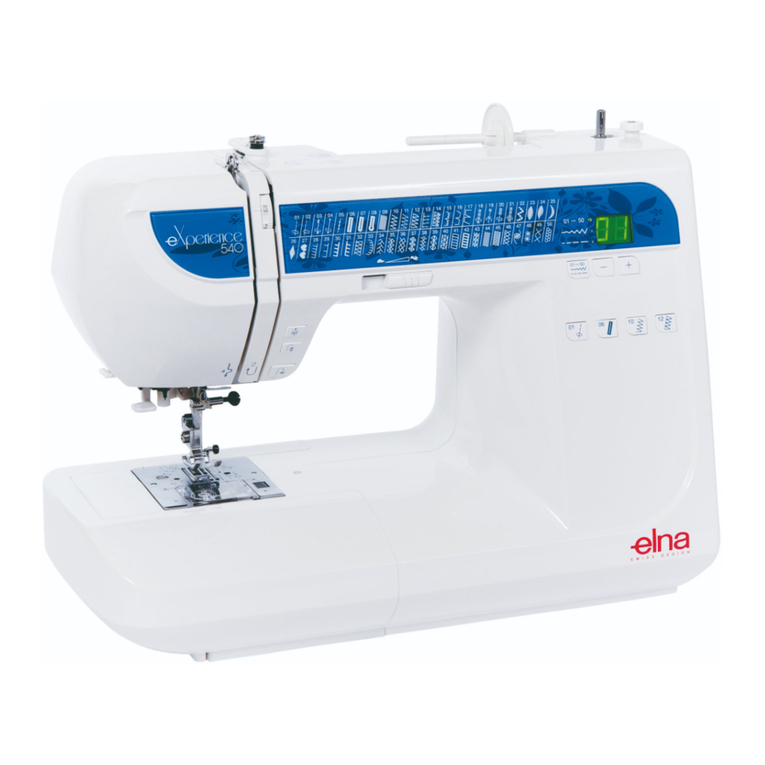2
TABLE OF CONTENTS
SECTION I – Machine Parts and Functions
Part Names ............................................................................................ 3
Standard Accessories ......................................................................... 4-5
Presser Foot and Accessory Definitions ............................................ 5-6
Extension Table and Free Arm .............................................................. 7
Circular Sewing Pivot Points ................................................................. 7
Knee Lifter ............................................................................................. 8
Connecting Machine to Power Supply .................................................. 9
Main Function of Keys ......................................................................... 10
Keyboard Selection Keys ............................................................... 11-13
Setting Quick Resumption, Sound and Language Modes ........... 14-15
Controlling Sewing Speed ................................................................... 15
Foot Pressure Dial ............................................................................... 15
How to Drop the Feed Dog ................................................................. 16
Presser Foot Lever .............................................................................. 16
Additional Presser Foot Clearance ..................................................... 16
Attaching and Removing Presser Feet ............................................... 17
Attaching and Removing Shank .......................................................... 17
Seam Allowance Lines ........................................................................ 17
Adjusting Needle Thread Tension ....................................................... 18
Using the Fine Adjustment Screw ....................................................... 19
SECTION II – Getting Ready to Sew
Selecting the Correct Needle and Thread .......................................... 20
Changing Needles ............................................................................... 20
Needle Definitions ............................................................................... 21
Winding a Bobbin .......................................................................... 22-23
Additional Spool Pin ............................................................................ 23
Inserting the Bobbin ............................................................................ 24
Threading the Machine ........................................................................ 25
Built-in Needle Threader ..................................................................... 26
Drawing Up the Bobbin Thread ........................................................... 27
SECTION III – Basic Sewing
How to Select a Stitch ......................................................................... 28
Straight Stitch ...................................................................................... 28
Starting to Sew ................................................................................... 28
Finishing Off a Seam ........................................................................... 28
Cutting the Threads ............................................................................. 29
Changing Sewing Direction ................................................................. 29
Adjusting Needle Position ................................................................... 29
Adjusting Stitch Length ....................................................................... 30
Programming My Personal Settings ............................................. 30-31
Sewing on Heavy Fabrics ................................................................... 32
Gathering ............................................................................................. 32
Zipper Insertion ............................................................................. 33-34
Rolled Hem .......................................................................................... 35
Zigzag Stitch ........................................................................................ 36
Overcasting ......................................................................................... 36
Satin Stitch Appliqué ........................................................................... 37
3-Step Zigzag ...................................................................................... 37
Mending a Tear .................................................................................... 38
Apply 7mm (1/4˝) Elastic ..................................................................... 38
Blind Hem Stitches .............................................................................. 39
Lingerie Stitch ...................................................................................... 39
Triple Seam ......................................................................................... 40
Super Overlock Stitch.......................................................................... 40
Super Stretch Stitch ............................................................................ 40
Buttonhole Variations .................................................................... 41-46
Corded Buttonhole .............................................................................. 47
4 Step Memory Buttonholes – Classic and Bound ....................... 48-51
How to Sew on a Button ...................................................................... 52
Darning ................................................................................................ 53
Bartacks ............................................................................................... 54
Arrowtack ............................................................................................. 55
Eyelets ................................................................................................. 55
Shell Tuck ............................................................................................ 55
Basting Stitch ....................................................................................... 56
Saddle Stitch ....................................................................................... 57
Stretch Seam ....................................................................................... 57
Overlock Stitch .................................................................................... 58
Double Overlock Stitch ........................................................................ 58
SECTION IV – Quilting
Piecing Fabrics Together ..................................................................... 59
Quilt Stitch ........................................................................................... 59
Quilt Guide ........................................................................................... 59
Open Toe Walking Foot ....................................................................... 60
Patchwork ............................................................................................ 60
French Knots ....................................................................................... 60
Buttonhole Appliqué ............................................................................ 61
Free Motion Quilting or Stippling ........................................................ 62
Stippling Stitch ..................................................................................... 62
SECTION V – Decorative Sewing
Scallop Edges ...................................................................................... 63
Corded Trim ......................................................................................... 63
Single Cord For Gathering Heavy Fabric ........................................... 63
Twin Needle Sewing ........................................................................... 64
Twin Needle Decorative Sewing ......................................................... 65
Satin Stitches – Elongation ................................................................. 65
Mirror Image ........................................................................................ 65
Circle Sewing ....................................................................................... 66
Large Scallop Border .......................................................................... 66
SECTION VI – Programming Combinations
Single Repeat with Lockstitch ............................................................. 67
Combining a Sequence ...................................................................... 68
Inserting a Second Color ..................................................................... 68
Reset Combined Sequence to Beginning ........................................... 69
Reset Combined Sequence to Beginning of Incomplete Stitch ......... 69
Combining Letters ............................................................................... 70
How to Preview the Combined Sequence .......................................... 71
Editing .................................................................................................. 71
Individually Adjusting Stitch Width or Length ...................................... 72
Alignment of Stitches within a Sequence ........................................... 72
Permanent Memory
(Saving, Overwriting, Recalling and Deleting) .............................. 73-74
SECTION VII – Heirloom
Pintucks ............................................................................................... 75
Bridging (Fagoting) .............................................................................. 75
Hemstitches ......................................................................................... 76
Fringing ................................................................................................ 77
Drawn Work ......................................................................................... 77
Smocking ............................................................................................. 78
SECTION VIII – Taking Care of Your Machine
Cleaning the Bobbin Area ................................................................... 79
Cleaning the Hook Area and Feed Dog ........................................ 79-80
Replacing the Bobbin Case ................................................................. 80
Changing the Light Bulbs .................................................................... 80
STITCH CHART ................................................................ 81-82
OPTIONAL ACCESSORIES .................................................. 83
WARNING MESSAGES .................................................... 84-85
TROUBLESHOOTING ........................................................... 86
INDEX ................................................................................ 87-88
NOTE: Information found in this instruction manual is
current at the time of printing. Elna reserves the
right to change and update specifications and
information as needed.

